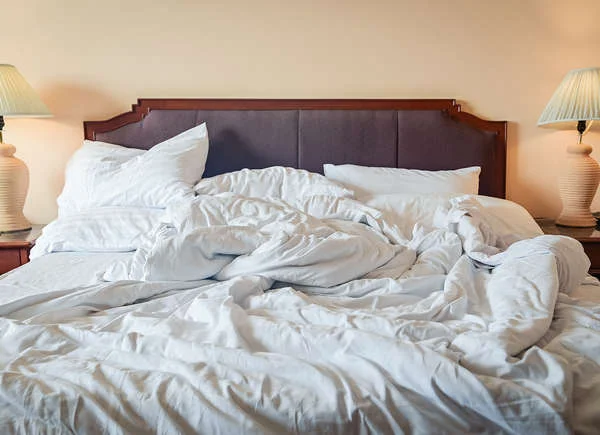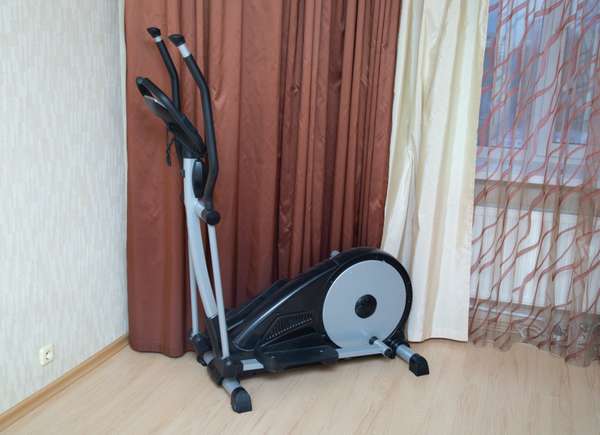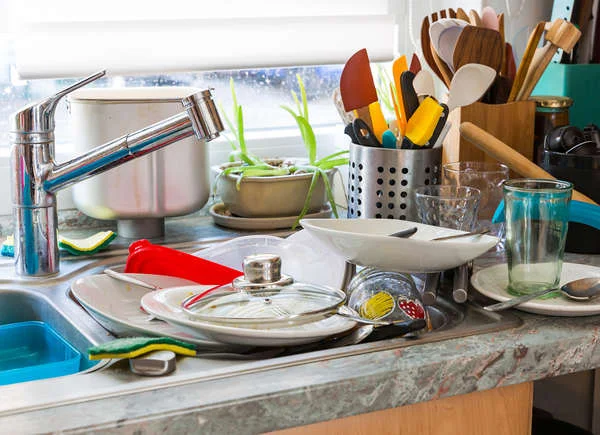Discover the pathway to tranquility within your home by implementing these simple adjustments to your living space. Bid farewell to stress and welcome back a sense of calm with these practical changes.
Say Goodbye to Stress: Transform Your Home into a Serene Sanctuary

Your home should serve as a peaceful refuge, shielding you from the pressures of the outside world. A well-organized, clutter-free environment can contribute to a calm state of mind, while a chaotic space may induce anxiety. Fortunately, there are straightforward steps you can take to restore a sense of tranquility in your living space. Let’s explore some common stressors that might be concealed in your home and explore ideas on how to address them.
Clutter: A Clear Mind Starts with a Clear Space

Begin with the most apparent stressor: clutter. Research from 2010 reveals that individuals with cluttered homes often experience elevated cortisol levels, the body’s primary stress hormone. The abundance of unnecessary objects overwhelms the visual senses, making it challenging to concentrate. To maintain a clutter-free home, start by decluttering and adopting a strategy to sustain a minimalist space.
Dripping Faucets: Silence the Irritation

The sound of a dripping faucet can be maddening, but fixing it is usually straightforward. Replacing the cartridge under the faucet handles can often resolve the issue. Ensure a peaceful environment by attending to these minor repairs, contributing to an overall sense of calm.
Revive Dying Houseplants: Energize Your Living Space

Neglected houseplants can be demoralizing, as they are believed to drain energy from a space. Revitalize your plants through repotting, trimming, fertilizing, and adhering to a consistent watering schedule. If a plant is beyond revival, consider replacing it with a vibrant, new addition.
An Unmade Bed: Set the Tone for Serenity

Making your bed daily can impact your waking habits positively. According to a Sleepopolis survey, individuals who make their beds are more likely to rise earlier and feel more confident. Incorporate bed-making into your daily routine to establish a serene atmosphere for a restful night’s sleep.
Disorganized Documents: Tame the Paperwork Chaos

Pay bills promptly and address administrative tasks regularly to prevent them from becoming stressors. Designate a specific spot for pending paperwork to keep it out of sight until you have time to manage it effectively.
Combat Dirt: A Clean Home is a Calm Home

Maintaining a clean home is essential for a relaxing atmosphere. Create a daily cleaning routine to ensure floors are swept, surfaces are dust-free, and grime is scrubbed away. If daily cleaning feels overwhelming, consider hiring professionals for a weekly or monthly deep clean.
Aspirational Items: Clear Out Unused Possessions

Unused items like a neglected treadmill or rarely worn jeans may be affecting your mood. Sell or donate such items to make room for belongings you actively use and appreciate.
A Disorganized Kitchen: Streamline for Tranquil Cooking

A disorganized kitchen can add stress to cooking. Organize cookware and utensils for easy access, creating a serene cooking environment.
Unpleasant Odors: Engage Your Senses Positively

Eliminate unpleasant odors by maintaining a clean environment. Dispose of spoiled food, empty trash cans, and give your living space a fresh fragrance with flowers or scented candles.
Poor Lighting: Illuminate Your Space Strategically

Create an optimal lighting environment with a combination of ambient overhead lighting and accent lights. Adequate task lighting is essential for areas like kitchens and offices, preventing eye strain and accidents.
Stress-Inducing Colors: Opt for Calming Hues

Consider the colors in your home, as bright or monochromatic tones can impact your mood. Choose calming colors like taupes, pale blues, beiges, and lilacs to promote a serene atmosphere.
Tech-Free Bedroom: Foster a Calming Sleep Environment

Optimize your bedroom for relaxation by leaving electronic devices in another room. Screen time before bed can disrupt melatonin production, hindering your ability to feel sleepy.
Noise Pollution: Reclaim Your Soundscape

Combat noise pollution, whether from urban settings or noisy neighbors, by using white noise machines or soundproofing techniques to restore a peaceful home environment.
Set Boundaries for Work: Maintain Work-Life Balance

For those working from home, establish a consistent schedule and delineate clear boundaries between work and relaxation. Keep work-related items in a separate space when not in use to foster a healthy work-life balance.
Mirrors: Reflecting on Stress

Mirrors can make a room feel spacious but may cause stress, according to research. Consider removing some mirrors from your home to create a more calming atmosphere.
The Wrong Foods: Nourish Your Well-Being

Evaluate your kitchen for stress-inducing foods and replace them with healthier alternatives. Incorporate herbal teas, fermented foods, and high-protein options to promote overall well-being.
Light Pollution: Create a Dark Haven for Rest

While sunlight is essential, excessive artificial light at night can disrupt sleep patterns. Invest in blackout curtains to reduce light pollution in bedrooms, ensuring a restful night’s sleep.
Embark on this journey to transform your home into a sanctuary of tranquility. By addressing these stressors, you can create a harmonious living space that nurtures a calm and serene atmosphere. Reclaim your home and embrace the peace that comes with a well-balanced and organized living environment.
images sources : istockphoto









